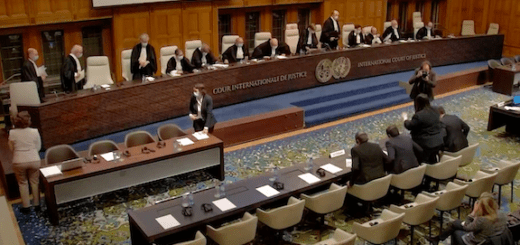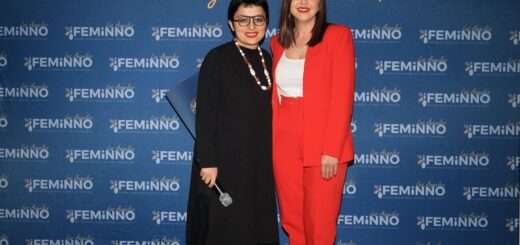Society for Armenian Studies Awards Best Conference Paper Prizes

The Society for Armenian Studies (SAS) announced the recipients of its 2024-2025 “Best Conference Paper Award.” Aram Ghoogasian was awarded a prize for his conference paper “Blood, Sweat, and Tears: Learning to Read at Midcentury,” and Arthur Ipek received an award for his conference paper on “Ecce philomela obispoensis (Tenny Arlen and her contribution to contemporary Armenian poetry).” The SAS awarded each of the winning recipients a $1,000 grant.
Ghoogasian’s conference paper draws from the memoirs of primary school students from locales across the Armenian heartland – including the Caucasus, Istanbul, the eastern Ottoman provinces, and the eastern Mediterranean – to provide a window into the harsh reality of the classroom in the nineteenth-century.
“I’m honored to be recognized by the prize committee for this paper, which grew out of bits and pieces of a dissertation chapter draft,” said Ghoogasian. “I hope the essay’s eventual publication will challenge us to take children and their experiences seriously as we continue to try to understand the cultural history of the Armenian nineteenth century.”
Aram Ghoogasian is a Postdoctoral Fellow in the Promise Armenian Institute and the Department of History at the University of California, Los Angeles. His current research project is a history of Armenian print culture in the nineteenth century. His academic writing has appeared in Kritika, Middle Eastern Literatures, the Journal of the Ottoman and Turkish Studies Association, and Études arméniennes contemporaines. Dr. Ghoogasian earned his Ph.D. from Princeton University in 2025.
Ipek’s conference paper focuses on the literary output of the late poet Tenny Arlen. Arlen moved to Los Angeles for her undergraduate studies, and decided to assiduously master the Armenian language, and upon the encouragement of her teacher – mentor Hagop Gulludjian, to meld a newly discovered appreciation of the language with her long – held love for poetry. In honor of her work and legacy as a poet, a posthumous poetry collection entitled “To Say with Passion: Why Am I Here?” was published in 2021. Marking the first American-born Armenian-language poet to receive widespread acclaim from the literary and non-literary communities alike, this publication proved to be a watershed moment for the Armenian literary tradition. Ipek’s paper is an analysis of Arlens’ work, interpreting and contextualizing her poetry.
“As I continue to expand my knowledge through research, it is encouraging to see that other scholars in Armenian studies share an interest in contemporary Western Armenian literature and its significance within the global literary landscape,” said Ipek. “By receiving the SAS prize, I will only be more motivated to deepen my knowledge and continue to write, all while bringing the voice of other writers to the forefront.”
Ipek is a graduate student in the Department of Psychology at New York University. He received a B.A. in Psychology and Linguistics from the University of Michigan. Apart from his professional career, he studies twentieth-century Western Armenian literature, and in particular, Armenian and World literature. He has published articles and poems in the Armenian-language press such as the Istanbul-based newspapers Marmara and Jamanak and the Beirut-based Hamazgayin Pakine literary journal.
“The SAS is pleased to recognize such excellent graduate students,” said SAS President Barlow Der Mugrdechian. “The scope of their work demonstrates the multi-disciplinary aspect of Armenian Studies. The SAS encourages young scholars to become more active in the field.”
The Society of Armenian Studies is an international body composed of scholars and students whose aims are to promote the study of Armenian culture and society, including history, language, literature, and social, political, and economic questions; to facilitate the exchange of scholarly information pertaining to Armenian studies around the world; and to sponsor panels and conferences on Armenian studies.
SAS thanked the Best Conference Paper Committee for reviewing all the submissions and selecting the winning papers.
The SAS Best Conference Paper Award was made possible through the generous institutional support of the Armenian Studies Program, University of Michigan, Ann Arbor; the Meghrouni Family Presidential Chair in Armenian Studies, University of California, Irvine; the National Association for Armenian Studies and Research (NAASR); the Armenian Communities Department, Gulbenkian Foundation; the Armenian Studies Program, California State University, Fresno; the Institute of Armenian Studies, University of Southern California; the Krikor and Clara Zohrab Information Center, New York; the Mashtots Chair, Harvard University; the Robert Aram and Marianne Kaloosdian and Stephen and Marian Mugar Chair in Modern Armenian History and Armenian Genocide Studies, Clark University; the Armenian Studies Program, University of California, Berkeley; and the Promise Armenian Institute at UCLA.l





